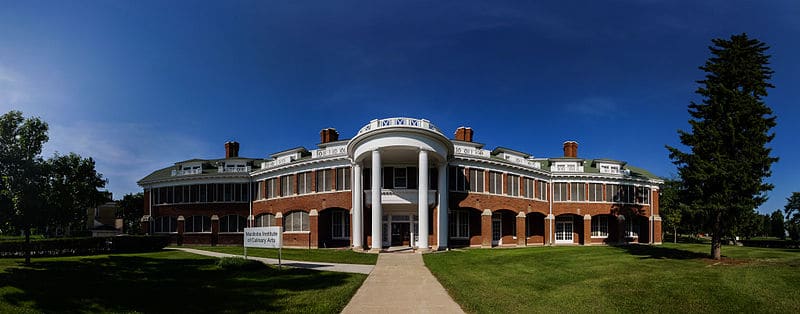ApplyBoard is taking a (virtual) trip across Canada to help international students understand this unique country, and discover the region that best fits their educational goals. We’re starting with the Prairie Provinces, and will look at your options for studying in Manitoba in this blog.
Curious about other Prairie Provinces? Read our Saskatchewan blog, and stay posted for Alberta!
Read on to learn why it’s a great idea to study in Manitoba, and learn about some of ApplyBoard’s partner schools.
Top 4 Reasons to Study in Manitoba
Manitoba’s motto is “Friendly Manitoba,” and international students will feel at home quickly. Manitoba’s cities and campuses are large enough to find everything you’re looking for, but have a close-knit feel that will help students adjust to their new home. “While it gets cold in the winter here, it is balanced out by Manitobans’ warmth of spirit,” notes Darcy Rollins, President of the Manitoba Council for International Education.

1. High Standard of Education
Every year, Manitoba welcomes almost 20,000 international students from over 80 countries. Its students have access to internationally-recognized academic institutions with excellent classroom-based, research, and work-integrated learning opportunities.
Many of Manitoba’s academic institutions open to international students are publicly funded. This funding helps to maintain more affordable tuition rates for international students.

2. Work Experience Opportunities
Did you know that Manitoba was the first province to offer off-campus work opportunities for international students? The Off-Campus Work Permit Program became permanent in 2005. Other provinces adopted this idea, and now international students may work off-campus across Canada.
Curious about working off-campus? Learn more about working while studying.
Work experience, whether after class or as part of a work-integrated learning opportunity, can help your application stand out when job-hunting. Plus, you’ll learn new skills and build your network with other international students and Canadian community members. The more people you know, the more possibilities you’ll have access to.
3. Post-Graduation Possibilities
In select programs, international students can complete a Mitacs Accelerate or Elevate internship, and apply to the Manitoba Provincial Nominee Program right after graduation.
Manitoba’s economy is diversified, so while it may not grow rapidly, it’s also unlikely to shrink. This means good opportunities for employment during and after your studies. MCIE President Darcy Rollins shares that: “From finance to aerospace, agriculture, or engineering—there’s work in almost every field. And that stability means there’s good predictability for students while they study and after they graduate.”

4. Excellent Quality of Life
Manitoba offers a range of arts, cultural events, and sports. The cost of living is lower compared to provinces like British Columbia and Ontario, so your student budget can go further. Manitoba’s cities and rural areas are also safe and welcoming.
Plus, there’s lots to do! Manitoba is an outdoor person’s dream, from hiking and fishing to skiing and sledding. Adventurous? Travel to Churchill, the polar bear capital of the world. Prefer city life? Light up the night with the art festival Nuit Blanche, visit one of more than 200 museums, join the crowd at a Winnipeg Jets hockey game, or embrace the cold with Festival du Voyageur, Western Canada’s largest winter festival.
ApplyBoard Partner Schools

Image Credit: Derek Gunnlaugson, CC BY-SA 3.0, via Wikimedia Commons
Assiniboine Community College (ACC)
Founded in 1961, Assiniboine Community College is a publicly-funded post-secondary institute, with its main campus in Brandon. It offers over 50 programs in:
- Agriculture
- Environment
- Health
- Human sciences
- Trades
- Technology
All ACC programs are eligible for the Post-Graduate Work Permit, and 2019 graduates had a 91% employment rate.
At ACC, academics are blended with hands-on learning. For example, students in media can work on a live broadcast, and culinary students can help run a restaurant! This means graduates can move on to employment with confidence. Students can also choose a 2+2 program, combining two years of study at Assiniboine with two years at a partner university—earning a diploma and a degree in four years!

Image Credit: Manitoba Institute of Trades and Technology
Manitoba Institute of Trades and Technology
Located in Manitoba’s capital, Winnipeg, the Manitoba Institute of Trades and Technology (MITT) offers industry-driven and student-focused programs. Most are one to two years long, and target provincial industry needs. With 3,540 full-time students and over 30 programs, class sizes are small. So, students receive lots of support from instructors.
MITT works closely with industry, often inviting employers to campus, and then building programs around desired skills. This partnership works: According to a 2019 MITT alumni survey, 89% of graduates were working in the field they studied.
Apprenticeship Manitoba has accredited many of MITT’s skilled trades programs. MITT also offers diplomas and certificates in business and IT, health care, and human services.

Image Credit: Ahmadexp, CC BY-SA 3.0, via Wikimedia Commons
University of Manitoba
Founded in 1877, only ten years after Canada became a country, the University of Manitoba’s campus is the oldest campus in Western Canada. Its student body is enrolled in over 100 programs. One in five students are international students.
The University of Manitoba is a member of the U15. These universities hold 81% of Canada’s university patents, and contribute C$8.5 billion of research each year.
While international students cannot study medical programs, they may apply for programs in:
- Architecture
- Agriculture and food sciences
- Arts and fine arts
- Business
- Education
- Engineering
- Kinesiology and Recreation Management
- Law
- Science
Students considering different majors can enter via University 1. This flexible first-year program lets students take a mix of classes, and declare their major in year two.
The University of Manitoba also has the province’s largest co-op program. Student placements have included roles at Amazon, Environment Canada, Google, Cargill, Boeing, and Ubisoft. Many students were offered full-time employment, and all co-op students graduate with hands-on skills and Canadian work experience.
From skilled trades to post-graduate degrees, business programs to agricultural studies, there’s something for everyone to study in Manitoba.
Explore study abroad programs in Manitoba on the ApplyBoard Platform!




